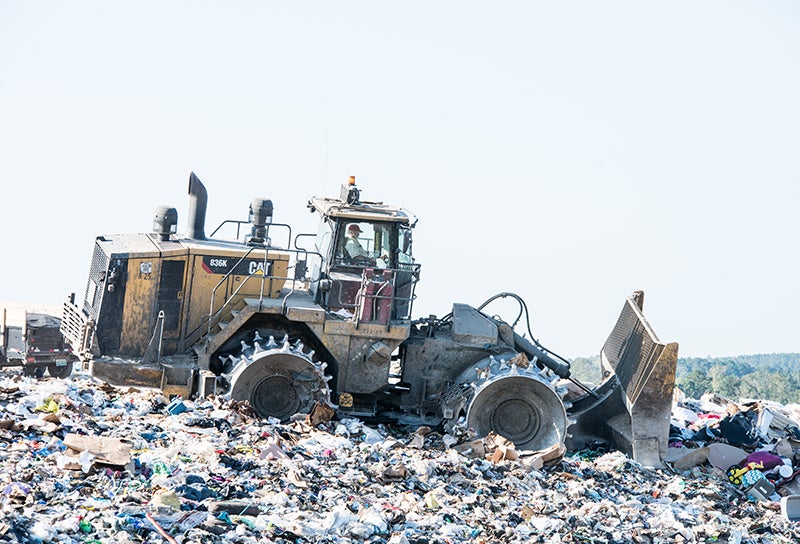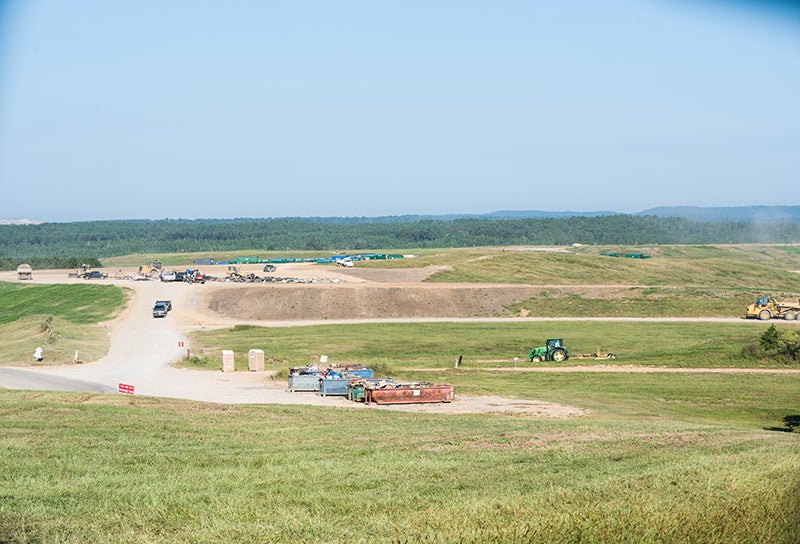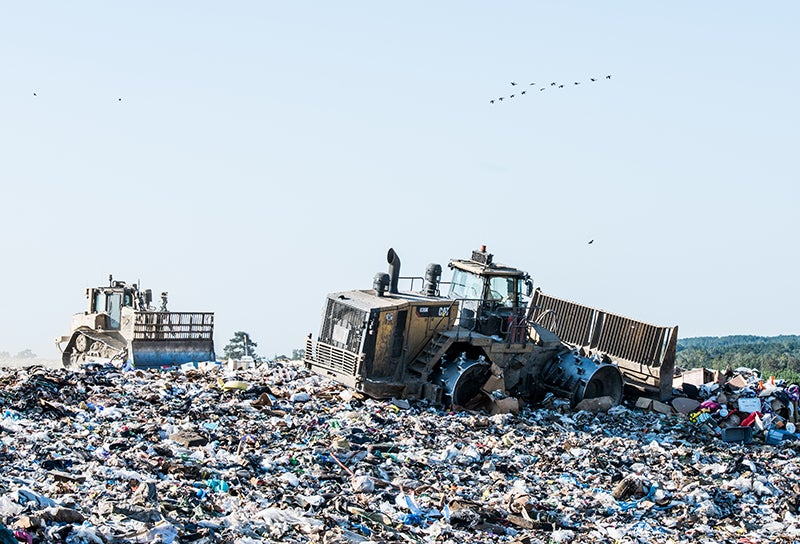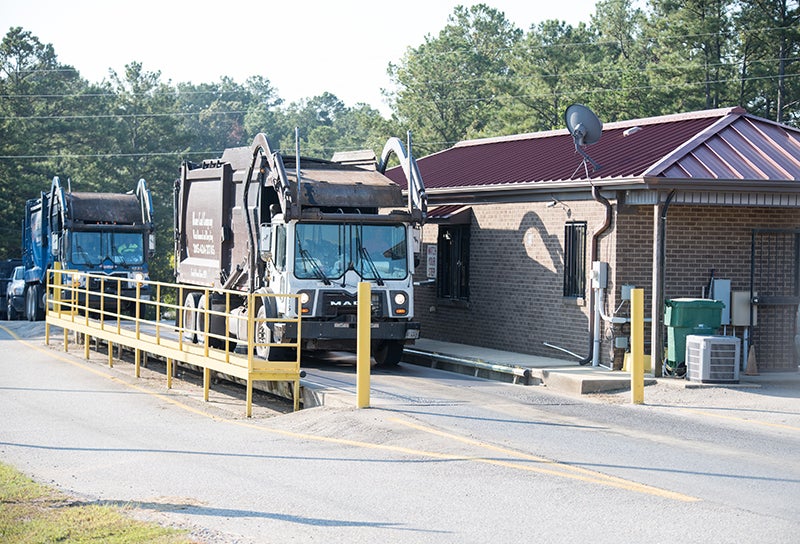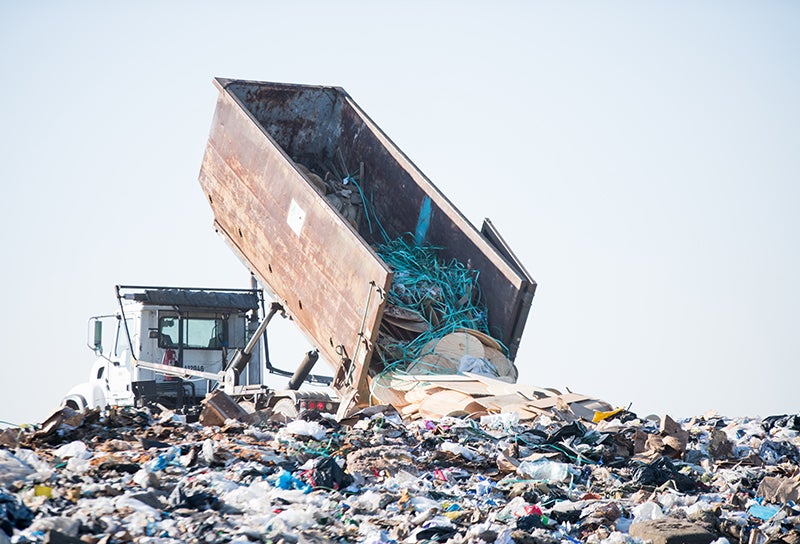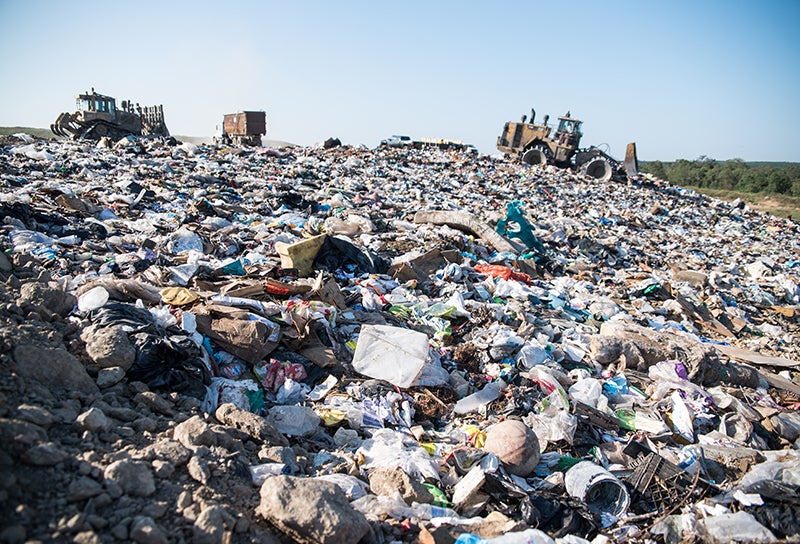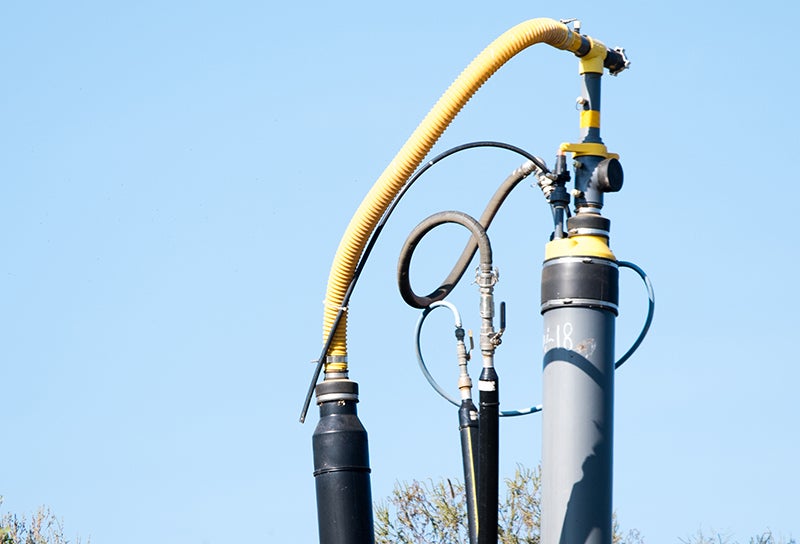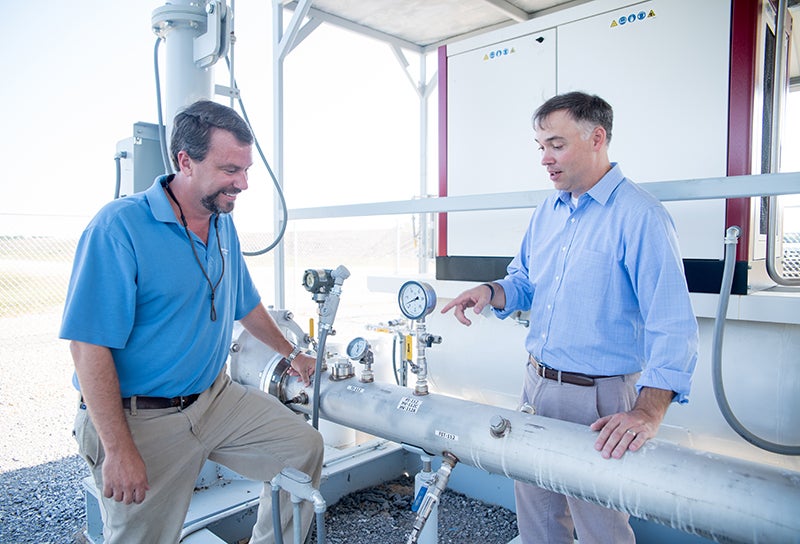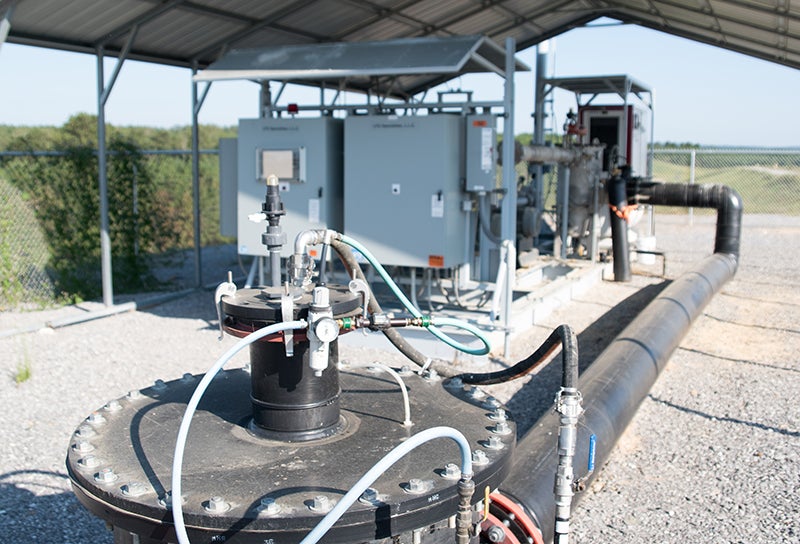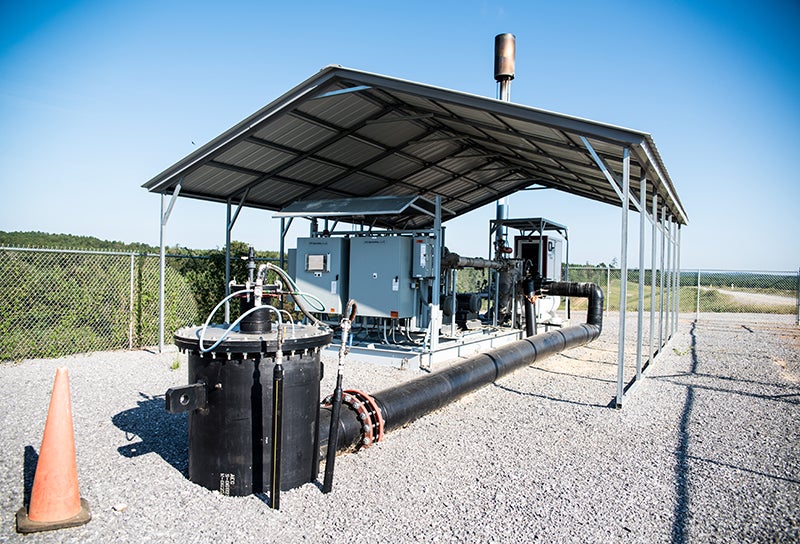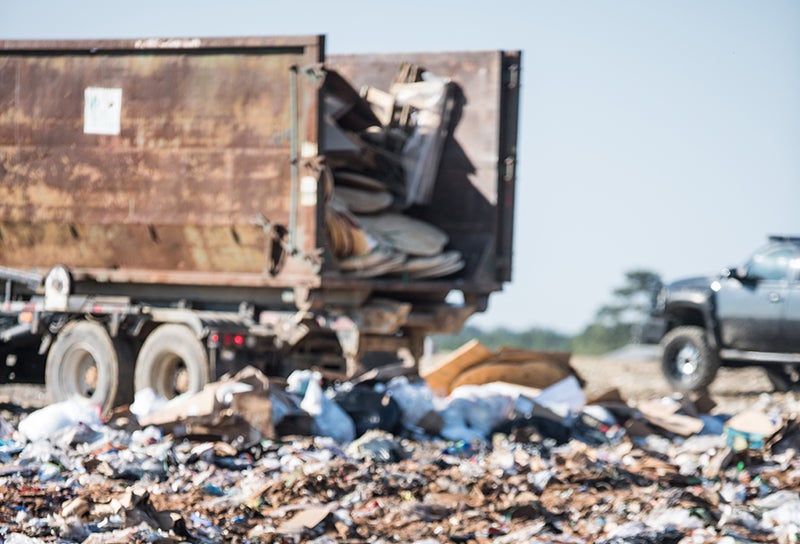Talking trash: An in-depth look at the Shelby County landfill
Published 5:44 pm Monday, October 16, 2017
By GRAHAM BROOKS / Staff Writer
Trash. It’s nasty and unpleasant, but the bottom line is that it’s part of everyday life.
When a resident in Shelby County fills up a residential trash bin, where does the trash actually go and what is the process to get rid of the garbage?
The simple answer is that it ends up in the Shelby County landfill located off Shelby County 70 between Columbiana and Calera, but the process to dispose of the trash properly is more sophisticated than just dumping it in an open field.
Chad Scroggins has been the manager for Shelby County Development Services since 2003 and oversees the management of the landfill operations day in and day out.
“There’s a difference between what is an old dump and a landfill,” Scroggins said. “A landfill is a lined cell and very technically built.”
Landfill logistics
When driving through the gates of the Shelby County landfill, visitors can immediately see a large hill which is actually the site of the original landfill called the “Sheala landfill” that began in 1982. Prior to being a landfill, the property was timberland.
The Shelby County landfill consists of 450 acres and of that, 150 acres are currently being used to dispose of trash.
Anyone wishing to dump waste in the landfill may do so at different rates such as $6 per car, $10 per pickup truck and $22 per ton for in-county residents.
“Anybody can access the landfill on any day, even if it’s a rainy day,” Scroggins said.
Several bins are located in one portion of the landfill so residents can pull up and easily dump trash and waste. Scroggins explained why it costs residents money to dump waste at the landfill.
“All that we sell is air space,” Scroggins said. “We sell you X amount of air space, and in one cubic yard of air space we can put an average of 1,450 pounds of trash and we’re packing it in there. If all we’re selling is airspace, we want to make as much trash go into that air space, and that’s why we compact it in.”
Roughly 97 percent of the trash that gets disposed at the Shelby County landfill comes from waste strictly within the county, while the other 3 percent can come from other places.
According to Scroggins, about 70 percent of the trash dumped at the landfill consists of residential household waste and the other 30 percent comes from construction and demolition debris.
The landfill is surrounded by nothing as far as houses or businesses.
“One of the best advantages of being here is that there’s nothing around you except for pine trees,” Scroggins said. “There’s no house as close as we are right now. There’s no smell and the grass is green and it looks like a big field. It’s not like it’s an eyesore by any means. You see a lot of equipment moving around and normal activities.”
How much trash is dumped?
Scroggins said a couple times per year he will lead tours of the landfill for schools and colleges around the area and certain questions are bound to follow.
“Of course usually the biggest question is ‘how much trash gets dumped at the landfill?’ We’ll also get asked things like ‘has there ever been a dead body found out here?’ and things like that,” Scroggins said laughingly.
Amazingly, the Shelby County landfill takes in approximately 200,000 tons of trash per year or 400 million pounds of trash.
The 400 million pounds of trash consists of no recyclable items, as recycling collection is sent to Birmingham and not the Shelby County landfill.
How is trash disposed?
The Shelby County landfill is broken down into separate unique cells, which is a system that aims to sufficiently dispose of trash while also protecting groundwater from contamination.
On Oct. 1, 2013, cell No. 4 was constructed and trash at the Shelby County landfill has been dumped into it for the last four years.
To utilize as much cell space as possible, the most important piece of equipment that helps break down the trash is a trash compactor.
“That’s our primary piece of equipment for handling trash,” Scroggins said. “We’ve got several million dollars worth of equipment out here and the compactor that crushes the trash into the ground is approximately $850,000 and is the most expensive piece of equipment located at the landfill. The compactor weighs about 120,000 pounds.”
A compactor operator will essentially go back and forth over thousands of pounds of trash multiple times to try and compact the trash into the ground as much as possible. Compacting trash is a key step to ensuring the lifespan of a cell lasts 10-12 years.
“If the trash is not compacted, the lifespan of a cell would drop from a roughly 12-year lifespan to only 3-4 years,” Scroggins said.
The second part of ensuring trash is being disposed in the most environmentally friendly way possible is to safely rid the cell of greenhouses gases with the two main culprits being methane and carbon dioxide.
Cells 1,2 and 3 at the landfill have a methane collection system that was installed about a year ago that will vacuum the methane and carbon dioxide off and destroy it.
The Shelby County landfill can destroy greenhouse gases at an efficiency rate of more than 99 percent once it’s burned, according to Scroggins.
“The flame burning is destroying the greenhouse gases from cells 1,2 and 3 and it burns 24 hours per day. It burns about 500 cubic feet per minute of gas,” Scroggins said.
So how does the system actually burn off the methane gas?
In the system, there are multiple pipes that go up to a header and near the top there is a methane well. The well is drilled into the cell that will show exactly how deep each cell is. The well draws it to the header and using alternating blowers, the gases are sucked off the cells through the pipes and then burnt off.
What happens when a landfill fills up?
The terrain at the Shelby County landfill consists of many humps and dips in the ground that has all been caused because of trash.
“What happens is when you put a hamburger out there or a newspaper or something carbon based, when it’s put in anaerobic state and all the oxygen is taken away from it by covering it up, the bacteria will then start to break it down,” Scroggins said. “When it’s broken down, the byproducts are methane and carbon dioxide with a roughly 50/50 mix. As that stuff starts to break down, it’ll start to settle and that’s why you’ll see dips in the land.”
Because of the trash and the terrain, there are limitations on what a landfill can be turned into once it is at capacity.
Currently, the Shelby County landfill has a lifespan of about 60 years left of land space at its current location.
“After it’s all said and done, you cannot build anything on top of a landfill,” Scroggins said. “We get the question, ‘what happens when it fills up?’ Sixty years from now when you do have it filled up you can do a park on it or fields, but you cannot build a structure on it. Anything built with a foundation will not work because it will continue to settle and it will crack.”
How to utilize the landfill
The Shelby County landfill is open Monday through Friday from 6:30 a.m. to 4:30 p.m. and Saturday from 7:30 a.m. to 3:30 p.m. year-round.
The landfill is closed on Sundays, New Years Day, Memorial Day, July Fourth, Labor Day, Thanksgiving and Christmas.
Twice a year, Shelby County residents may take advantage of a free day at the landfill that typically happens on the first Saturday in April and October of each year.
The landfill does not accept hazardous waste that includes car tires, car batteries or any kind of liquid waste. The landfill will not accept vehicles.
At $22 per ton, Scroggins said the Shelby County landfill offers one of the lowest rates in the state for a tipping fee.
For more information on the Shelby County landfill, visit Shelbyal.com/index.aspx?NID=253.


